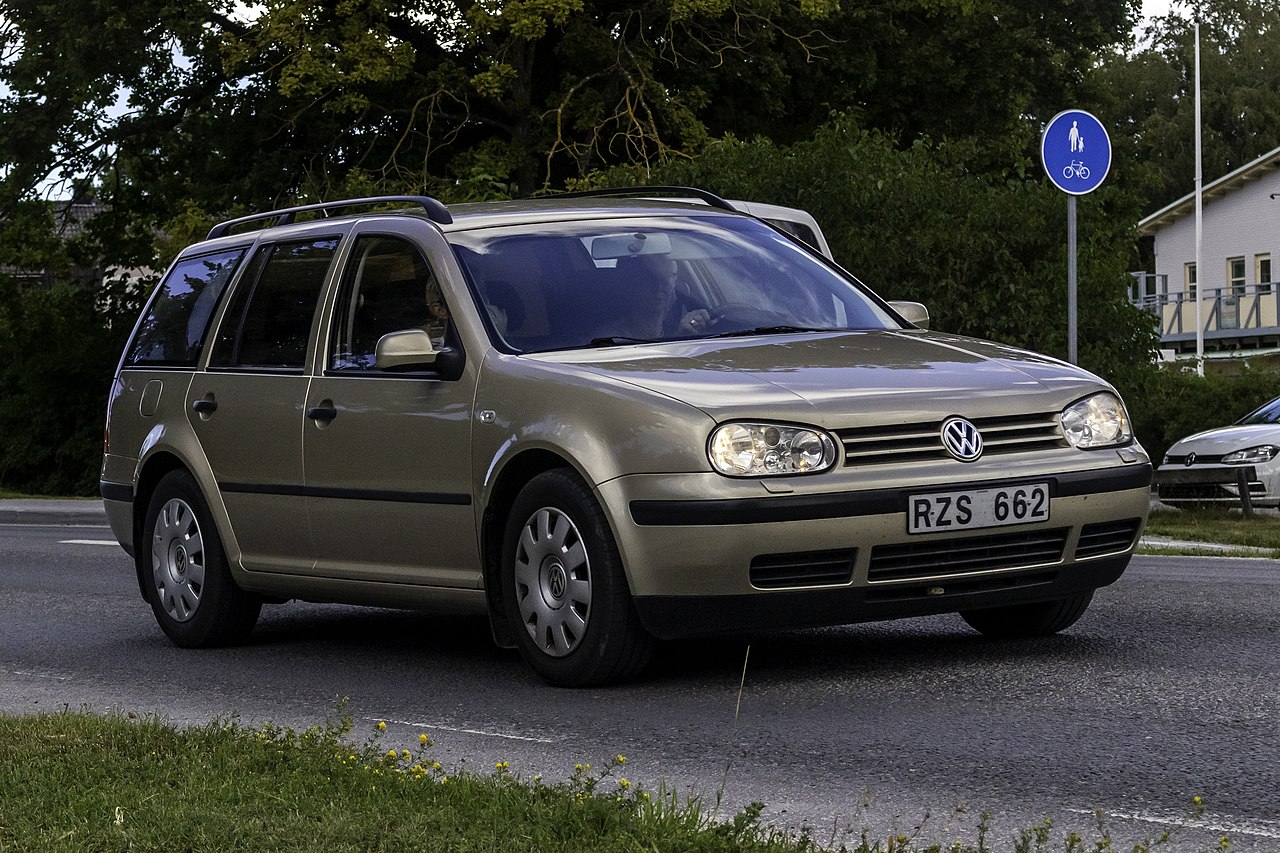We hype up our favorite bands; We critique on sports and cars; We opine about pop culture. On occasion, will do some creative writing. This is PATHOLOGICAL HATE. Follow us on Twitter: @pathological_h8
Thursday, November 17, 2022
Volkswagen Golf Variant
For the first time an estate was produced, being launched in early 1993, and bringing it into line with key competitors such as the Ford Escort and Vauxhall/Opel Astra, which had long been available as estates. The GT variants included a 2.8LVR6 engine, and a convertible launched as the Cabrio (Type 1E).
The Volkswagen Golf Mk4 Variant was introduced in 1999. It was discontinued in 2006, and succeeded in 2007 by the Volkswagen Golf Mk5 Variant. Unlike the Mk3, it was offered in North America with the "Jetta" name with corresponding front styling. The "Jetta Wagon" was used in North America instead of the "Bora" name.
Volkswagen introduced an estate/station wagon version of the fourth-generation car at the 2001 Los Angeles Auto Show[19] as the first A-segment wagon Volkswagen offered in North America — the body style solely manufactured in Wolfsburg. The wagon offered 963 l (34 ft3) of volume with the rear seat up, and wth rear seats were folded provided 1473 l (52 ft3).
In Europe, the estate version was at times marketed as a Golf wagon, either in addition to or instead of the Bora. Other than different front bumpers, fenders, headlights, and hood, the cars were identical. In some countries, VW marketed both Golf Variant and Bora Variant, with the Bora Variant being more upmarket than its counterpart.
The station wagon version of the Golf Mk5 debuted at the International Geneva Motor Show in March 2007 and was marketed as the Golf Variant in the German domestic market, in The United States as the Jetta SportWagen, and in Argentina and Uruguay as the Vento Variant. Designed by Murat Günak, it is more closely related to the Jetta saloon with a shared front fascia design and front doors. It was produced in Puebla, Mexico since April 2007 alongside the similar Jetta with a targeted annual production of 120,000 units.
Volkswagen did not intend to release the station wagon/estate version of the Golf Mk5 until later in its life cycle. Initially, Volkswagen expected the Golf Plus and Touran to be able to cover the station wagon segment left by the Golf, however it was reported that dealers and customers were asking for a replacement instead.
It was facelifted in late 2009, with changes including the front clip and interior from the Golf Mk6, while the remaining is based on the pre-facelifted model. It is marketed as the station wagon version of the Golf Mk6 as it was sold alongside it. The facelifted model was also marketed as the Golf Wagon and Variant in the Canada and Mexico, while it continued to be sold as the Jetta SportWagen in the United States.
A facelifted variant Mk5 Golf Variant model was introduced in 2009 as the Mk6, despite carrying the front fascia, interior styling, and the powertrain from the new Golf, the body shell and underpinnings are based on its fifth-generation predecessor. It is sold in the US as the Jetta SportWagen, in Mexico and Canada as the Golf Wagon and in South America as the Jetta Variant or Vento Variant.
The estate/station wagon of the Golf was revealed at Geneva Motor Show in March 2013. It is marketed as the Golf Variant in Germany and Golf SportWagen in the United States and Canada, replacing the Jetta SportWagen nameplate previously used in the US.
The Golf Estate's loadspace volume has been expanded from the 505 litres of its predecessor to 605 litres (loaded up to the back seat backrest) versus the 380 litres of the Golf hatchback. Loaded up to the front seat backrests and under the roof, the new Golf Estate offers a cargo volume of 1,620 litres (versus the 1,495 litres of the Golf Estate Mk6). The rear seat backrests can be folded remotely via a release in the boot.
Four petrol engines and three diesel engines are available, ranging from 85 PS (63 kW; 84 hp) to 140 PS (103 kW; 138 hp) in the petrol and 90 PS (66 kW; 89 hp) to 150 PS (110 kW; 148 hp) for the diesel engines.
For the first time, the Golf Estate will also be available as a "full" BlueMotion model (with other modifications, including revised aerodynamics). This model uses a 1.6-litre diesel engine producing 110 PS, has a six-speed manual gearbox, and is expected to achieve a combined fuel consumption of just 85.6 mpg (equivalent to 87 g/km of CO2).
The Golf SportWagen is available in S, SE, and GT (Trendline, Comfortline, and Highline in Canada) (GT is SEL in the USA) trim levels. There is also a Golf Estate R, using the same EA888 2.0 engine found in the MkVII Golf R hatchback. The Golf Variant is also built as a rugged version called Alltrack with slightly-raised suspension, body cladding, and all-wheel drive.
Subscribe to:
Post Comments (Atom)







No comments:
Post a Comment